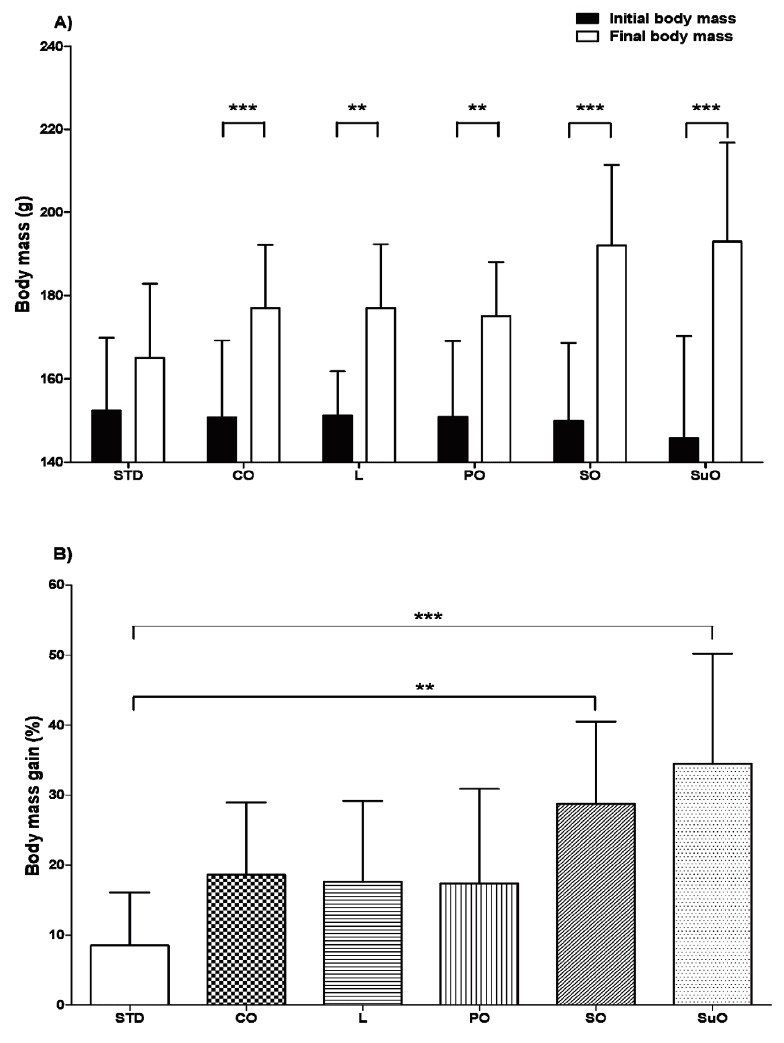Figure 1.

The initial (time: 0 weeks) and final (after 12 weeks of feeding) body masses (A) and percentage body mass gain (B) of male, Japanese quail (Coturnix coturnix japonica) fed either standard, commercial poultry feed (STD, standard diet) or one of five different high-fat diets. 57, four-week old, male Japanese quail were randomly assigned to 6 dietary groups and fed their respective diets for 12 weeks. Group 1 received standard, commercial poultry feed. Groups 2–6 received the standard, commercial poultry feed enriched with 22% added fat (on a weight/weight basis). The added fat was in the form of coconut oil (CO), lard (L), palm oil (PO), soyabean oil (SO), or sunflower oil (SuO). Data represented as means±standard deviation. n = 10 (soyabean oil and palm oil groups); n = 9 (sunflower oil and standard diet groups); n = 11 (coconut oil group); n = 8 (lard group). (A) ** p<0.01 when comparing initial versus final body mass within each individual dietary group. (B) ** p<0.01 and *** p<0.001 when comparing birds in the soyabean and sunflower oil groups, respectively, to the standard diet group.
